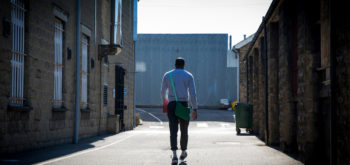Campaigners for Colin Norris, the former nurse jailed for the murdering of four patients, are claiming to have new evidence that challenges the safety of his conviction, undermines the original expert evidence and exposes a ‘persistent false belief in scientific certainty’. The former nurse, dubbed the ‘Angel of Death’ in the tabloids, received a life sentence with a recommendation for a minimum 30 years after being found guilty in 2008 of killing ill and elderly at two Leeds hospital by injecting them with insulin.
A new publication (The case of Colin Norris: the jury blinded by science) has been produced by Inside Justice. It argues that the case highlights the failure of our adversarial trial system that encourages expert witnesses to adopt a ‘clear-cut, dogmatic stance’ rather than offering ‘more qualified, tested opinions which many jurors confused and/or unimpressed’.
‘The trial judge in Colin Norris’s case correctly warned jurors that the expert witnesses had put forward opinions but it is nevertheless possible the persistent false belief in scientific certainty prevailed. After 5 months of complex evidence, jurors may well have been “blinded by science”.’
- Inside Justice was set up in 2010, as part of Inside Times and is run by the journalist Louise Shorter. More info HERE.
- You can read an article by Paul May on the Norris case in Appalling vistas and angels of death
- If you want to find out more or joing the support group, email freecolinnorris@aol.com
Colin Norris was convicted of the murder and attempted murder of five Leeds hospital patients by injecting them with insulin. He has always protested his innocence – see below, for more on his case (from The case of Colin Norris)
________________________________________________________________________
‘When Colin was convicted we were just left by ourselves. There was no one to tell us what to do. There was no support group,’ his mother June Morrison said at the lunch of the publication. ‘We were numb. My son had never been into trouble with the police.’
She said that the family was hopeful that new research on the medical evidence would take the case back to the Court of Appeal. Norris’s conviction was upheld by the Appeal judges in 2009. The Criminal Cases Review Commission, the independent body that investigates miscarriages of justice, began an investigation in March 2012, following an application by Norris’s legal team in late 2011. The CCRC were ‘taking their time, although I would rather they took their time and got it right rather than trying to rush it through’, Morrison said.
Colin Norris’s solicitor Jeremy Moore, head of Carter Moore’s criminal defence team, compared the case to other notorious miscarriages such as Sally Clarke and Barry George that subsequently fell apart over the fallibility of statistics.
‘I receive a lot of letters from individuals seeking to challenge their convictions every week – far more than I can deal with,’ Moore said; adding that it was ‘abundantly clear’ most of those letters were ‘going absolutely nowhere’. But when he received Norris’s letter from prison ‘alarm bells rang’.
One in 73 million
Moore said that he was ‘highly respectful’ of the value of expert evidence, particularly in complicated medical cases, however he added:
‘When the case against the defendant is solely founded on the basis of expert evidence, particularly when it goes into statistics, there is unfortunately significant scope for juries to be misled. Statistical evidence can often be extremely persuasive to a jury but often misleading; unless there has been sufficient relevant research into the particular area and the jury is made fully aware of all the material on that research.’
The lawyer cited the case of lawyer Sally Clarke, jailed for life after her two babies died from cot death. ‘Sir Roy Meadows testified that the chances of two children from an affluent family suddenly suffering infant death syndrome was one in 73 million,’ he said; adding that the discredited expert simply arrived at that figure by ‘squaring the one in 8,500 chance of the likelihood of a cot death in similar circumstances’. The Royal Statistical Society subsequently issued a public statement expressing its concern at the ‘misuse of statistics in the courts’.
In the case of Barry George, wrongly convicted for the murder of Jill Dando, a single speck of firearm discharge residue found in his pocket was reckoned to have come from the gun that shot her. ‘On appeal and retrial, we were able to show the particle was just as likely to come from the environment than to have landed in the pocket from that gun,’ Moore said.
‘I truly believe that in the fullness of time Colin’s case will be thought of alongside those cases as a grave miscarriage of justice.’
Moore argued that it was vital for the prosecution case to establish that naturally occurring hypoglycaemia (low blood sugar) was extremely rare. ‘The Crown dismissed the case of naturally occurring hypoglycaemia,’ Moore continued. ‘At the trial they paraded purported expert after expert all of whom advised the jury that it was very unusual to see hypoglycaemia in persons who were not diabetic.’ Moore has instructed a leading expert, Professor Vincent Marks whom the prosecution apparently had consulted in the early stages. ‘He concluded that, contrary to current standard teaching, spontaneous hypoglycaemia is common in 10% of elderly, frail, sick people especially those with low body weight and suffering from malnutrition. [He also concluded] that there was little reason that hypoglycaemia was anything other than a spontaneous response to their underlying illness.’
Jeremy Moore also attacked the government’s proposed reform of criminal legal aid – see HERE. The justice secretary Chris Grayling is proposing to introduce a system of price competitive tendering into criminal defence work in order to reduce the legal aid bill by a further £220 million. The way in which the government proposes to run the tendering system would result in clients having no choice as to the solicitor who should represent them. ‘Three quarters of the criminal legal aid firms would close overnight – and those remaining would have to cut corners so much so that the quality of their representation would be a thing of the past,’ he said. ‘Miscarriages of justice such as this one would almost certainly be far more commonplace. There wouldn’t be firms like ours to pick up the pieces. We would not be in existence. These proposals must be defeated because, if they aren’, the justice system as we know it will not exist any more.’
________________________________________________________________________
THE CASE OF COLIN NORRIS
On March 3rd, 2008 at Newcastle Crown Court, Colin Norris was convicted of murder and attempted murder after a trial which lasted 19 weeks. He received a life sentence with a recommendation that he serve a minimum of 30 years in prison. The prosecution case was that, while working as a nurse at two Leeds hospitals, he unlawfully injected insulin into five elderly female patients causing them to suffer severe hypoglycaemia, low blood sugar.
Four of the women died. None of them had diabetes.
Common denominator
The Crown argued that Norris was the ‘common denominator’ in all five cases as he had been on duty when the patients’ low blood sugar developed. It was further claimed that severe hypoglycaemia in non-diabetic patients was so rare that it could only be explained by a massive dose of insulin or other diabetic medication having been administered externally.
Angel of death
Colin Norris was dubbed the ‘Angel of death’ in the press. From the moment he was first arrested in 2002, he has protested his innocence. The case against him was based on a widely-held fallacy. Far from being a rare occurrence, new studies indicate that hypoglycaemia is relatively common among elderly hospital patients with conditions other than diabetes.
This evidence has never been considered by any court.
The lengthy West Yorkshire police inquiry into the alleged crimes of Colin Norris was headed by senior officers who had recently reviewed the case of serial killer Dr Harold Shipman. The failure of neighbouring greater Manchester police to apprehend Shipman earlier was strongly criticised by Dame Janet Smith in her official report on the case. Since Colin’s conviction senior police officers have repeatedly asserted they ‘stopped another Harold Shipman in the making’.
By their own admission, the West Yorkshire inquiry team speculated that Colin Norris was a serial killer before they had plausible concrete evidence. From the outset, the bias was to investigate ‘deaths in which the suspect Norris had attended at the time’. His case demonstrates the extreme danger that conclusion-driven police investigations may lead to the conviction of innocent people.
The case also illustrates difficulties posed by the manner in which expert opinion evidence is presented within the adversarial trial system. The fact that evidence from expert witnesses constitutes opinion may be overlooked to be replaced by trust in the erroneous notion of scientific certainty. After months of such testimony, the jury at the trial, Norris may have felt ‘blinded by science’.







